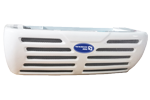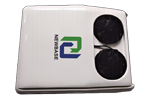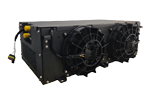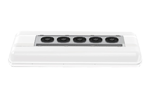The heater valve is the heater switch of the car heater. The working principle of the car heater is that the radiator in the heater is connected to the circulating water of the engine through the inlet/outlet pipeline, and the water valve is a switch
The size of the cooling water circulation The circulation route of the cooling water: The thermostat can make the cooling water have three circulation routes: small circulation, large circulation and mixed circulation.
1. Small cycle: When the engine water temperature is lower than 76°C, the main thermostat valve is closed, the bypass valve is opened, and the cooling water channel from the cylinder head to the radiator is cut off. The cooling water flows out of the cylinder head water jacket, enters the water pump through the thermostat bypass valve and the bypass pipe, and is sent to the cylinder block water jacket through the water pump. Because the cooling water does not pass through the radiator to dissipate heat, the engine temperature can be increased rapidly. This type of cycle is called a small cycle.
2. Large cycle: When the engine water temperature is higher than 86°C, the main thermostat valve opens and the bypass valve closes. The cooling water enters the radiator through the main valve to dissipate heat, and the water temperature drops rapidly, and then is sent to the cylinder block water jacket by the water pump. This type of cycle is called a big cycle.
3. Mixed circulation: When the water temperature is between 76 and 86 ℃, the thermostat main valve and the bypass valve are in a partially open state. At this time, both large and small circulations exist, and only part of the cooling water is radiated by the radiator. 2. Working principle of wax thermostat. Paraffin wax is solid at room temperature. When the water temperature is lower than 349K (76°C), the main valve is completely closed and the bypass valve is fully opened. The water from the cylinder head enters the water pump directly through the bypass pipe. It is called a small loop. Since the water only flows between the water pump and the water jacket without passing through the radiator, and the flow rate is small, the cooling intensity is weak.
When the engine water temperature reaches 349K (76°C) or higher, the paraffin wax gradually becomes liquid, and its volume increases, forcing the rubber tube to shrink, thereby generating an upward thrust on the lower cone of the center rod. Because the upper end of the rod is fixed, the center rod produces a downward thrust against the rubber tube and the sensing body, overcoming the spring tension to gradually open the main valve, and the bypass valve opening gradually decreases.








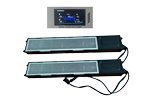
.png)
